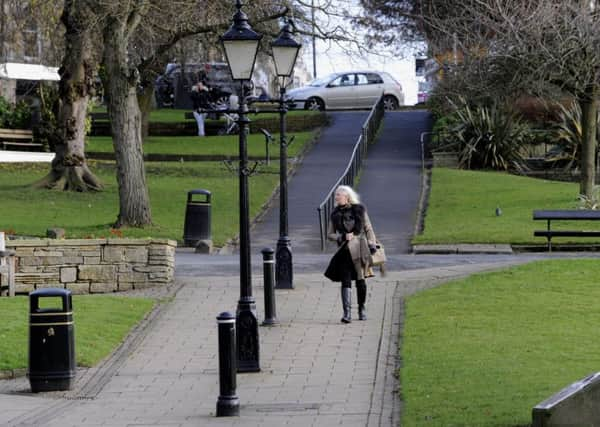Why Yorkshire's rare lamps and old bridge must be protected


More than 1,000 places have been given protected status in 2016, with two in the county making Historic England’s list of the 21 most surprising and lesser known sites. Also featuring are a Bronze Age burial site in suburban England, Britain’s oldest water chute ride, rock-carvings by conscientious objectors and a newly exposed shipwreck.
“Over 1,000 places have been added to the list in 2016, ensuring the most important sites across the country are recognised and protected,” said Roger Bowdler, director of listing at the Government body.
Advertisement
Hide AdAdvertisement
Hide Ad“Historic England strives to keep the list rich and relevant so that the best of our, often weird and wonderful, heritage can continue to be enjoyed and understood for future generations.”
He said the 21 sites and structures on the organisation’s highlights list aimed to draw attention to some of the lesser-known heritage protected this year but which all play a role in telling people about England’s history.
They range from the ancient, such as the Bronze Age funerary barrow in Shooters Hill, south-east London, to the 1970s concrete “Lego Building” at the University of Reading campus.
In Yorkshire, a unique clapper bridge in Castleton, Whitby, was granted Grade II-listed status because of its architecture, historic interest and rarity.
Advertisement
Hide AdAdvertisement
Hide AdThis simple bridge, with horizontal stone slabs supported by vertical piers, was incredibly rare for its time in the later 18th century, when more complex arched bridges were more common.
And in Harrogate, a series of elegant Victorian lamp-posts, designed in 1848, which were once gas lights and are now powered by electricity, also make the list.
These traditional cast-iron columns, a familiar sight in the town’s conservation area, were branded a safety hazard by North Yorkshire County Council (NYCC) and threatened with removal. The bid from Harrogate Civic Society, to secure their Grade II status, was an attempt to stop them being scrapped.
“We have now got the ability to keep them,” said society chairman Henry Pankhurst.
Advertisement
Hide AdAdvertisement
Hide Ad“They are genuinely Harrogate patterned ones, dating back to 1848, which gives them quite a lot of clout as a heritage item.”
In total, 19 were given listed status, including four tall lamp posts which feature the original Harrogate coat of arms.
There were 15 smaller ones, on Crown Place, Montpellier Hill, Promenade Square and Swan Road, which can now be preserved. These lamps, topped with square Victorian lanterns, are intricately detailed.
“Much of this detail from the casting has been lost under many years of grime and paint,” said Mr Pankhurst. “But there is the Yorkshire Rose, tapered fluted columns, and many have a monkey’s head cast onto them.
Advertisement
Hide AdAdvertisement
Hide Ad“These street lamps contribute a great deal to the street scene. We can’t just throw the heritage away. It’s important - these lamps contribute to the style and age of the area.
“They are unique to Harrogate. English Heritage have totally accepted this - they don’t list lamp posts lightly.”
Among the more unusual places given protected status by Historic England in 2016 are strange buildings, an old water chute and a newly discovered shipwreck.
The Post-War ‘Lego Building’, at the University of Reading, was built in 1972 and dubbed the Lego Building because of its distinctive, exposed concrete design.
Advertisement
Hide AdAdvertisement
Hide AdThe water chute at Wicksteed Park in Kettering, built in 1926, is the oldest in Britain. And a rare and unidentified wooden shipwreck on Madbrain Sands, Somerset, was exposed by the winter storms of 2014/2015. It is believed this could prossible be the remains of the Bristol Packet, wrecked at Minehead in 1808, but it has never been formally identified.